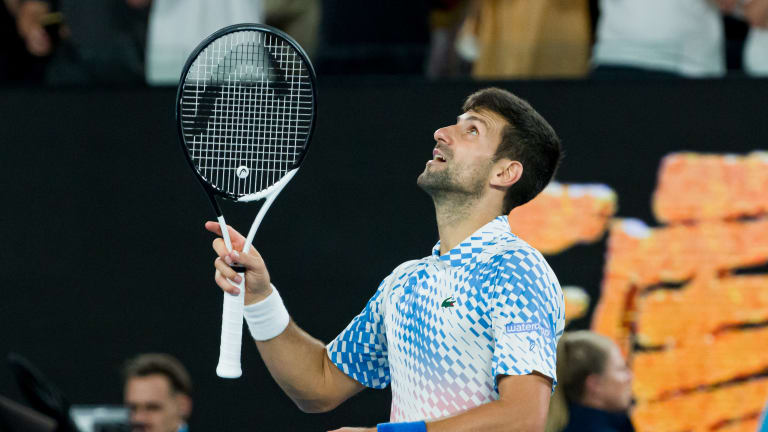Australian Open
Novak Djokovic isn’t on a revenge tour in Australia—he just wants his title back
By Jan 25, 2023Australian Open
Madison Keys—with a new racquet, serve and attitude—is into her first Australian Open final
By Jan 23, 2025Australian Open
2025 Australian Open men's semifinal preview: Ben Shelton vs. Jannik Sinner
By Jan 23, 2025Australian Open
Madison Keys saves match point, edges Iga Swiatek to reach Australian Open final
By Jan 23, 2025Australian Open
Aryna Sabalenka vows to "pay for whatever" Paula Badosa wants after Australian Open semifinal win
By Jan 23, 2025Australian Open
2025 Australian Open women's semifinal preview: Iga Swiatek vs. Madison Keys
By Jan 22, 2025Australian Open
The mild-mannered Tyrolean Terror Jannik Sinner has been steely at the Australian Open
By Jan 22, 2025Australian Open
2025 Australian Open men's semifinal preview: Novak Djokovic vs. Alexander Zverev
By Jan 22, 2025Australian Open
Jannik Sinner into Australian Open semis over Alex de Minaur
By Jan 22, 2025Australian Open
Ben Shelton criticizes Australian Open interviewers
By Jan 22, 2025Australian Open
Novak Djokovic isn’t on a revenge tour in Australia—he just wants his title back
“You could say there’s something extra this year, yeah.” After his demolition of Andrey Rublev, it’s looking more and more likely that Nole will get it.
Published Jan 25, 2023
Advertising

Djokovic struck 14 aces, saved all five break points he faced and won 80 percent of his first-serve points against Rublev.
© © Andy Cheung / ArcK Images / Getty Images